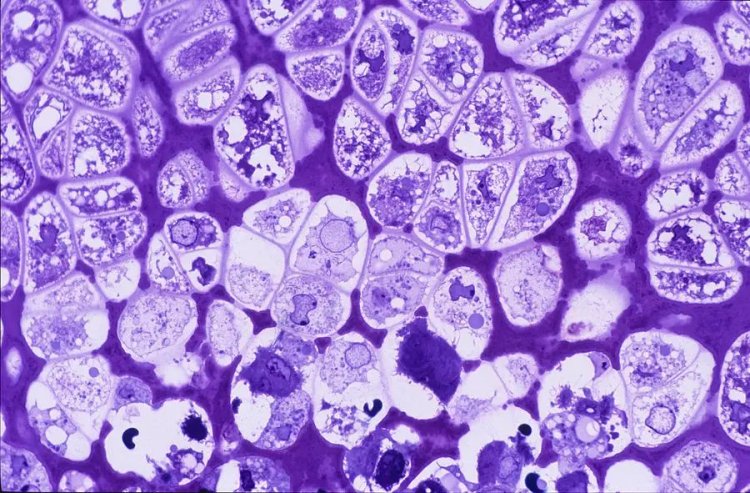What are Chondrocytes? UPSC Notes
Chondrocytes are the building blocks of cartilage tissue in our bodies.

Chondrocytes are the building blocks of cartilage tissue in our bodies. They are vital for synthesizing the extracellular matrix and maintaining cartilage structure. The primary components are proteoglycans and collagen. Chondrocytes are surrounded by collagen fibers and secrete substances that provide strength and flexibility to cartilage.
The shape of chondrocytes in the cartilage matrix is typically round or polygonal, except at tissue boundaries where they can be flattened or discoid to fit onto artificial joint surfaces. When artificially grown, active cells often exhibit intracellular features. Although aging leads to senescence events, normal adult articular cartilage (AC) shows no mitotic figures. Adult chondrocytes have diverse morphologies, densities, and organizations depending on their location. If flattened, these cells align parallel to the surface, which has the highest cell density, as well as the collagen fibers.
In the deepest regions, chondrocytes align in columns perpendicular to the cartilage surface, alongside collagen fibers. In the intermediate zone, chondrocytes appear more rounded and enlarged, with a less organized distribution and random fiber orientation. The behavior of chondrocytes varies across different zones due to their location. Primary chondrocyte cultures may exhibit differences in synthetic features. Primary cilia, which are sensory organelles in chondrocytes, play a crucial role in the local organization of cells in the developing growth plate. These primary cilia act as central hubs for hedgehog signaling, wingless type, and also involve mechanosensitive receptors.
Chondrocytes – Location and Function

Articular cartilage (AC) contains structures that can be found in different forms within the intervertebral disc. Chondrocytes, the cells responsible for producing and maintaining the cartilage matrix, play a crucial role in maintaining homeostasis in AC joints and providing cushioning during combined movements. The cartilage matrix separates chondrocytes from each other, and these cells are responsible for chondral repair and responding to external trauma when tissues are damaged, thanks to their regenerative capabilities.
During the fifth week of development, mesenchyme is incorporated into the initial cartilage, which plays a vital role in activating areas of chondral development and forming chondrification centers. Prechondrocytes, derived from mesenchymal cells and future chondroblasts, develop and release the extracellular matrix and collagenous fibers. This leads to the accumulation of elastic and collagenous fibers in the intercellular matrix. Ultimately, this matrix connects to the cartilaginous typecast.
There are three primary types of cartilage:
1.Fibrocartilage:
This type is found in intervertebral discs and certain parts of the knees. It contains a moderate number of chondrocytes, making it less flexible compared to hyaline cartilage.
2.Elastic cartilage:
Found in joints, the ends of ribs, and the nose, elastic cartilage is the second most flexible type after hyaline cartilage.
3.Hyaline cartilage:
This type is found in the Eustachian tube (ear) and contains the highest number of chondrocytes, making it the most flexible among the different cartilages.

Chondrocytes play a crucial role in cartilage growth. These specialized cells have the ability to divide, resulting in daughter cells that remain grouped together in clusters of 2-4 cells. Chondrocytes reside in lacunae, which are small pockets surrounded by the matrix.
While mature chondrocytes may contain fat droplets, active chondrocytes undergo enlargement and become secretory in nature. They exhibit a basophilic cytoplasm and possess a rough endoplasmic reticulum.
The perichondrium, a dense irregular connective tissue layer, surrounds the cartilage surface. Within the inner layer of the perichondrium, chondroblasts and fibroblasts are present, responsible for the production of collagen.
What's Your Reaction?















